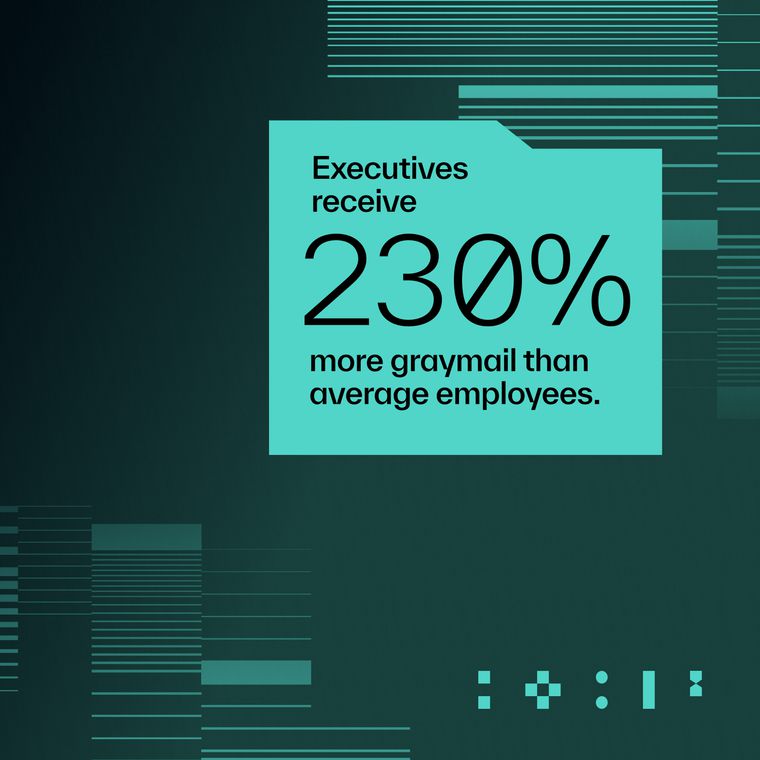A Comprehensive Guide to the MITRE ATT&CK Framework
Discover the MITRE ATT&CK Framework in this concise guide. Understand how it categorizes adversary tactics and techniques to enhance your cybersecurity detection and incident response.
July 2, 2025
MITRE Adversarial Tactics, Techniques, and Common Knowledge (ATT&CK) is a comprehensive knowledge base of adversary behaviors across the cyberattack lifecycle. Developed in 2013 from MITRE's Fort Meade Experiment, this framework serves as an essential resource for cybersecurity professionals defending against sophisticated threats. The standardized framework helps in understanding, detecting, and responding to threats targeting enterprise IT, cloud environments, and mobile devices.
By categorizing attacker tactics, techniques, and procedures, ATT&CK enables security teams to enhance threat detection, streamline incident response, and refine defensive strategies. This guide breaks down the core components of ATT&CK and explains how to use the framework effectively
Importance of the MITRE ATT&CK Framework for Cybersecurity
The MITRE ATT&CK Framework provides a detailed, practical knowledge base that empowers security teams to understand adversary behavior, strengthen detection and response, and prioritize investments based on evolving cybersecurity threats. It changes the way teams tackle today’s complex threats by giving them practical, real-world insights. Instead of guessing what attackers might do, security teams get a clear picture of how adversaries behave and what to watch for.
Here are some of the prominent advantages you should expect from the MITRE ATT&CK Framework:
Outlines Attack Patterns: One of the biggest advantages is understanding attacker tactics and motivations. ATT&CK lays out common attack patterns based on real incidents, helping teams prepare for what’s likely to come next.
Spot Weaknesses: By mapping your existing defenses to specific ATT&CK techniques, you can see precisely where gaps exist in your existing systems. That makes it easier to create focused detection rules and response plans that work.
Helps Plan a Budget: When it comes to budgeting, ATT&CK guides smarter spending. Instead of throwing resources at every possible threat, it highlights which attack techniques are most relevant to your environment, so you can prioritise investments that make the most significant impact.
Reality Check: The framework also keeps security efforts grounded in reality. By basing strategies on documented attacker behaviors rather than assumptions, you ensure your defenses stay relevant against evolving threats.
Better Communication: Last but not the least, ATT&CK improves communication. The framework provides standardized terminology for threat discussions. When a team member references a specific technique ID, everyone immediately understands the context. Enhancing employee cybersecurity engagement can further improve communication and awareness among security teams.
This is how implementing the MITRE ATT&CK framework into cybersecurity operations drives smarter decisions, sharper responses, and stronger teamwork, which is crucial for staying ahead of sophisticated attackers.
That said, let’s understand the matrices that are an integral part of of the framework.
What Are the MITRE ATT&CK Matrices?
The MITRE ATT&CK Framework provides a set of three detailed matrices that map attacker behaviors across various environments. These matrices provide security teams with a clear, organised view of threats tailored to their specific technology landscapes, enabling targeted defence strategies and more effective risk management.
Here’s a list of the matrices you should know about:
Enterprise Matrix
The most widely used is the Enterprise Matrix, which covers a broad range of platforms including Windows, macOS, Linux, and cloud environments. This matrix provides a comprehensive view of the threats facing modern enterprises. It features platform-specific sub-matrices to allow targeted analysis and receives regular updates reflecting real-world attack observations.
Security teams use the Enterprise Matrix to evaluate their protection across various operating systems, develop comprehensive detection strategies, and concentrate resources on the highest-risk techniques.
Mobile Matrix
For organizations with mobile priorities, the Mobile Matrix zooms in on threats unique to iOS and Android devices. Mobile environments introduce distinct challenges, with attackers employing tactics that differ from traditional endpoints. The Mobile Matrix guides teams in strengthening mobile device management, improving app security, and detecting mobile-specific threats more effectively.
Industrial Control Systems Matrix
The Industrial Control Systems (ICS) Matrix is designed for the operational technology that powers critical infrastructure. This matrix addresses cyber-physical attacks and their potential impacts on physical safety. It bridges the gap between cybersecurity and industrial operations, helping sectors like energy, manufacturing, and utilities identify vulnerabilities, implement tailored security measures, and prepare response plans for ICS-specific threats.
What Are Tactics and Techniques of MITRE ATT&CK?
The MITRE ATT&CK Framework provides a detailed map of attacker goals (tactics) and the specific methods (techniques) they use to achieve those goals. Understanding these elements helps security teams anticipate threats, focus defence efforts, and improve detection and response across the full attack lifecycle.
Tactics in MITRE ATT&CK
Tactics are the strategic objectives attackers aim to accomplish during an intrusion. Think of them as the “why” behind each step, such as gaining initial access or evading detection. The Enterprise Matrix organizes the attacker’s process into the following key tactics, each representing a phase or goal during an attack:
Reconnaissance: Collecting information about targets to identify potential weaknesses and plan the attack. This can include scanning networks, researching employees, or harvesting email addresses.
Resource Development: Acquiring or setting up tools, infrastructure, or accounts needed to carry out attacks, such as building phishing sites or obtaining malware.
Initial Access: Gaining entry to the victim’s system. Standard methods include spearphishing, exploiting vulnerabilities, or using valid credentials.
Execution: Running malicious code or commands on the target system to establish a foothold or carry out further operations.
Persistence: Techniques attackers use to maintain access even after reboots or credential changes, like creating backdoors or scheduled tasks.
Privilege Escalation: Gaining higher-level permissions to access more sensitive data or control systems fully.
Defense Evasion: Avoiding detection by security controls through methods like obfuscation, disabling logs, or using legitimate tools for malicious purposes.
Credential Access: Stealing account credentials to facilitate lateral movement and deeper access within the network.
Discovery: Exploring the network and systems to gather detailed information about the environment, users, and security measures.
Lateral Movement: Moving through the network to compromise additional systems or resources.
Collection: Gathering data that attackers want to steal or use, such as documents, credentials, or keystrokes.
Exfiltration: Transferring stolen data out of the network to attacker-controlled locations.
Command and Control: Establishing and maintaining communication channels between compromised systems and the attacker's infrastructure to control the attack.
Impact: Actions aimed at disrupting, damaging, or destroying systems and data, including ransomware deployment or data destruction.
Techniques in MITRE ATT&CK
Techniques form the core of the MITRE ATT&CK framework, representing the specific methods attackers use to achieve their objectives. While tactics answer "what" adversaries want to accomplish, techniques explain "how" they do it.
Each technique documents a real-world attack method observed across multiple threat campaigns. For instance, under the Privilege Escalation tactic, you'll find various techniques like exploiting vulnerable services, abusing token privileges, or leveraging scheduled tasks, which are all proven methods attackers use to gain higher-level system access.
Every technique entry provides actionable intelligence for security teams, including required attacker privileges, affected platforms and operating systems, detection strategies, and real-world examples from threat actor campaigns. This granular detail helps security professionals understand not just what attackers might do, but also how to spot and stop these activities.
Organizations use these technique definitions to map their security controls, identify coverage gaps, and prioritize detection engineering efforts. Rather than defending against abstract threats, teams can focus on the specific methods adversaries employ in the wild.
This structured approach transforms threat intelligence from theoretical concepts into concrete, defensible security measures.
Understanding and mapping attacker tactics and techniques through the MITRE ATT&CK Framework enables organizations to effectively strengthen their security posture. By identifying gaps, prioritizing investments, and tailoring detection and training efforts, teams can respond more precisely to real threats.
Apart from the tactics and techniques, the next important part of the framework is the navigator.
What Is the MITRE ATT&CK Navigator?
The MITRE ATT&CK Navigator provides an interactive visualization tool for exploring the threat landscape. This web-based application enables security teams to customize and work with the ATT&CK matrix tailored to their specific organizational needs.
The Navigator enables highlighting techniques used by specific threat actors targeting your industry. This capability helps focus defensive measures on relevant threats. The tool also visualizes security control coverage, revealing areas of strength and vulnerability. By mapping existing security tools to the MITRE ATT&CK Framework, teams can quickly identify defensive gaps and prioritize improvements.
Different team members use the Navigator to meet their unique needs. CISOs gain a clear view of security coverage and gaps, enabling them to make informed strategic decisions. IT Security Managers monitor the effectiveness of security controls and identify areas where improvements are needed. Compliance Officers link regulatory requirements directly to specific techniques, making compliance management more straightforward and organised. This tailored approach ensures everyone can focus on what matters most to their role.
The Navigator supports customization through layers, allowing teams to create different views for current defenses, planned improvements, or threat intelligence. These layers can be compared to generate actionable security insights.
The tool integrates into existing security workflows, supporting threat hunting operations and incident response activities by mapping attacker actions and anticipating next steps.
The Navigator is available on GitHub as an open-source tool. Organizations can deploy it internally for enhanced security and customization or contribute to its development.
Applications of the MITRE ATT&CK Framework
The MITRE ATT&CK Framework transforms cybersecurity operations by providing a comprehensive knowledge base of adversary tactics, techniques, and procedures (TTPs) derived from real-world observations, enabling organizations to enhance threat detection, strengthen defenses, and improve security operations across threat intelligence, hunting, incident response, and email security.
Here are some applications of the MITRE ATT&CK framework:
Threat Intelligence Integration
The ATT&CK framework enhances threat intelligence by contextualizing adversarial behaviors for organizational relevance and understanding. Teams can focus response efforts on high-risk techniques and build environment-specific threat models based on documented adversary tactics and techniques. When intelligence indicates spearphishing campaigns targeting your industry, security teams can immediately prioritize relevant techniques, such as Spearphishing Attachment (T1566.001) or Spearphishing Link (T1566.002), moving beyond theoretical threats to address specific technique implementations.
Advanced Threat Hunting
The framework revolutionizes threat hunting through technique-based hunting hypotheses and targeted queries aligned with specific techniques. Rather than conducting unfocused searches, hunters can systematically search for evidence of Credential Dumping (T1003) or other adversarial tactics using the framework's detailed technique descriptions. This structured approach enables the systematic detection of compromise across the entire attack lifecycle.
Security Control Assessment and Red Teaming
Organizations use the ATT&CK framework to evaluate the effectiveness of security tools by mapping controls to specific techniques and identifying protection gaps. Red teaming exercises benefit from realistic attack scenarios based on documented adversarial behaviors, as they test defenses against proven techniques rather than hypothetical scenarios. This approach establishes common terminology between red and blue teams while ensuring adversary emulation reflects actual threat models.
SOC Optimization and Email Security
For Security Operations Centers (SOC), the framework provides enhanced alert triage through technique mapping and improved detection rules based on documented adversarial behaviors. Email security applications particularly benefit from focusing on initial access techniques, especially Phishing, with targeted detection for email-specific attack vectors. Understanding command and control communications and advanced email targeting tactics strengthens the defense against sophisticated email threats.
AI-Driven Security Integration
Modern AI security solutions complement the ATT&CK framework by using machine learning to detect behaviors associated with specific techniques, mapping security events to documented adversary tactics in real-time. This AI-ATT&CK combination analyzes behavior patterns to identify multi-technique attacks, creating effective defense against sophisticated threats across both traditional IT environments and industrial control systems.
Now that you’ve an understanding of how MITRE ATT&CK Framework works, let’s look at some of the ways you can actually implement it in your organization.
Implementing the MITRE ATT&CK Framework
Successfully implementing the MITRE ATT&CK Framework requires a clear, step-by-step approach. Here are the steps to implement the MITRE ATT&CK Framework:
Understand Your Environment
Before applying the MITRE ATT&CK Framework, it’s critical to document everything that needs protection. Start by inventorying your organization’s critical assets and systems. Understand the layout and architecture of your network to identify potential vulnerabilities. Additionally, catalog all current security tools, technologies, and processes already in place. This comprehensive knowledge provides the foundation to effectively map attacker tactics, techniques, and procedures (TTPs) to your environment.
Assess Your Threat Landscape
Next, identify the threats most relevant to your industry, size, and geographic location. This means reviewing industry-specific threat reports and analyzing previous security incidents within your organization. Supplement this with external threat intelligence resources to gain a fuller picture of adversarial behaviors and trends targeting your sector. This tailored understanding allows you to focus on the adversary tactics and techniques most likely to affect your operations.
Start Small and Focused
Rather than attempting to cover the entire ATT&CK framework at once, begin with a manageable subset of techniques. Prioritize those that address the highest risks unique to your organization. A practical starting point is focusing on one tactic category, such as Initial Access, which covers how attackers first gain entry into systems. This focused approach allows teams to build expertise and demonstrate early wins.
Map Current Capabilities
Evaluate your existing security controls and processes by mapping them to the relevant ATT&CK techniques you identified. Creating a matrix that links your controls to these attacker techniques helps visualize where your defenses are strong and where gaps remain. This methodical assessment enables targeted improvements rather than broad, unfocused efforts.
Identify and Prioritize Gaps
With a clear picture of coverage, determine which vulnerabilities pose the most significant risk. Rank gaps based on their potential impact and likelihood of exploitation. Also, consider the feasibility of remediation in terms of time, resources, and complexity. Prioritizing in this way ensures your security improvements are both strategic and achievable.
Develop an Implementation Roadmap
Translate your priorities into a practical, step-by-step plan. Establish realistic timelines for addressing identified gaps and allocate the necessary resources. Regularly schedule reassessments to monitor progress and adapt the plan as your environment or the threat landscape changes. This roadmap keeps your security efforts organized and focused on achieving your goals.
Leverage Available Resources
Make full use of the wealth of resources available to support your ATT&CK implementation. The official MITRE ATT&CK website offers detailed information on each technique. Tools like the ATT&CK Navigator provide visualization capabilities to simplify mapping and analysis. Security awareness training programs can help build your team’s expertise, ensuring that your organization maximizes the benefits of the framework.
Integration with Email Security
Email remains a prime attack vector, so focus on integrating ATT&CK into your email security strategy. Map email-specific techniques, such as Phishing (T1566), to your current controls. Identify gaps in your detection and prevention capabilities, and evaluate advanced solutions, including AI-driven tools, that can detect increasingly sophisticated email threats. A strong email security posture is crucial for defending against one of the most common entry points for attackers.
Implementing the MITRE ATT&CK Framework is not a one-time project but an ongoing journey. It begins with understanding your environment and threat landscape, then progresses through focused assessment and strategic planning. By leveraging the framework’s detailed knowledge base and available tools, organizations can strengthen their defenses where it matters most. Continuous monitoring, reassessment, and adaptation are vital to keeping pace with evolving adversarial tactics, techniques, and procedures, ensuring your security posture remains resilient in a dynamic threat landscape.
Operationalizing the MITRE ATT&CK Framework
The MITRE ATT&CK Framework has fundamentally changed organizational security approaches. Its comprehensive, observation-based methodology provides security leaders with insights to build stronger defenses, make informed decisions, and address evolving threats. The framework's continuous updates and community-driven approach ensure ongoing relevance for security professionals worldwide.
Abnormal's behavioral AI analysis complements the framework's focus on detecting unusual behaviors associated with specific techniques. By mapping detection capabilities to documented techniques, we provide enhanced visibility into email threats within broader attack contexts.
Ready to see how Abnormal protects your inbox? Book a demo with our team to experience how our behavioral AI analysis detects and prevents email attacks mapped to specific ATT&CK techniques, particularly those in the Initial Access tactic.
Related Posts
Get the Latest Email Security Insights
Subscribe to our newsletter to receive updates on the latest attacks and new trends in the email threat landscape.


